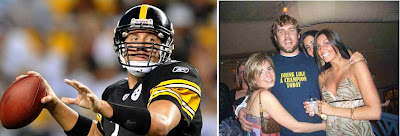Posted by Jay Livingston
Are humans “naturally” selfish?
David Brooks had a column last month about the origins of morality in individuals. Referring to the work of Yale psychologist Paul Bloom, Brooks said
If you give a 3-year-old two pieces of candy and ask him if he wants to share one of them, he will almost certainly say no. It’s not until age 7 or 8 that even half the children are willing to share.Ah, sharing. The word was not exactly a Proustian madeleine, but it did bring back the days when I used to take my son to the playground in Riverside Park. The problem of sharing was a prominent feature of the social landscape.
One morning, I was talking with a mom there, and at the other side of the sandbox, a child of two or three was strenuously holding on to a ball or truck or some toy that another child wanted to play with. I don’t recall if there was a scuffle or shouting or crying, but there might have been. I do remember the mother’s comment – she wasn’t Paul Bloom or David Brooks, but she might have been: “They’re just so possessive about their toys at this age. I guess it’s human nature.”

I nodded, but my inner sociologist winced. It did seem natural – many of the kids were indeed proprietary about their stuff, though there were certainly differences among kids. But at the same time, it occurred to me that I often heard parents say things like,
That’s Cody’s truck. If you want to play with it, you have to ask him.Sharing was a treasured virtue. Parents on the Upper West Side (and perhaps elsewhere) were constantly trying to get their toddlers to share. I dimly remember music videotapes (Kidsongs? Raffi?) with songs urging us all to share. But in the phrases I heard at the playground (and there were many variations on this theme) the parents were saying that the first order of business was to know who a toy belonged to.
That’s not your doll, that’s Emma’s doll.
Yes it’s your backhoe, but it would be nice to let Alex play with it too.
Sharing, at least in our world, came only after the concept of private property had been firmly established. Much of the parental discourse at the playground was about ownership – informing kids which toy was the property of which child. Some parents had written their child’s name in permanent marker on each of the kid’s toys just to avoid any confusion or conflict. An unidentified toy left lying around for any length of time could prompt a discussion among the adults as to whose it was.
We were good Upper Left Side parents. Hell, a third of us would have voted for a socialist if we’d had the chance. We would no more try to inculcate in our kids the primacy of private property than we would buy stock in Halliburton. But still, all those messages about who each toy belonged to rested on the concept of ownership. Even sharing, though a noble ideal, was trumped by norms of private property. Parents seemed to follow the rule that while they could strongly encourage sharing, they could not absolutely require it. I often heard parents tell their kids that it was good to share, that it was nice to share, that you would want little Julia to share her toys with you, wouldn’t you? And parents effusively praised children who then shared.
But I never saw a parent force sharing on a kid who didn’t want to. After all, the toy did belong to the kid. It was her property – hers and not the parent’s – and property rights prevailed. It was her possession to do with as she pleased.*
The possessiveness of the kids in the sandbox may have been part of their nature, as Brooks, Bloom, and Zoe’s mom said. But parents, perhaps unwittingly, were putting considerable effort into cultivating that part of human nature.
What about children in societies that place less emphasis on individual, private ownership? I wonder what conclusions about human nature Paul Bloom would have reached if he studied 3-year old hunter gatherers.**
-----------------------------
*The parents’ strategy here exemplifies a more general American solution to problems that arise when a culture places such a strong value on independence and autonomy. If those values mean that you can’t force the kid to do the right thing, how do you get her to make the right decision? This post from two months ago discusses the problem as it occurs both in the real world and in sitcoms.
** Prof. Bloom’s views on virginity too seem to ignore the way we humans have conducted ourselves for most of our time on this planet. (See this more recent post.)


